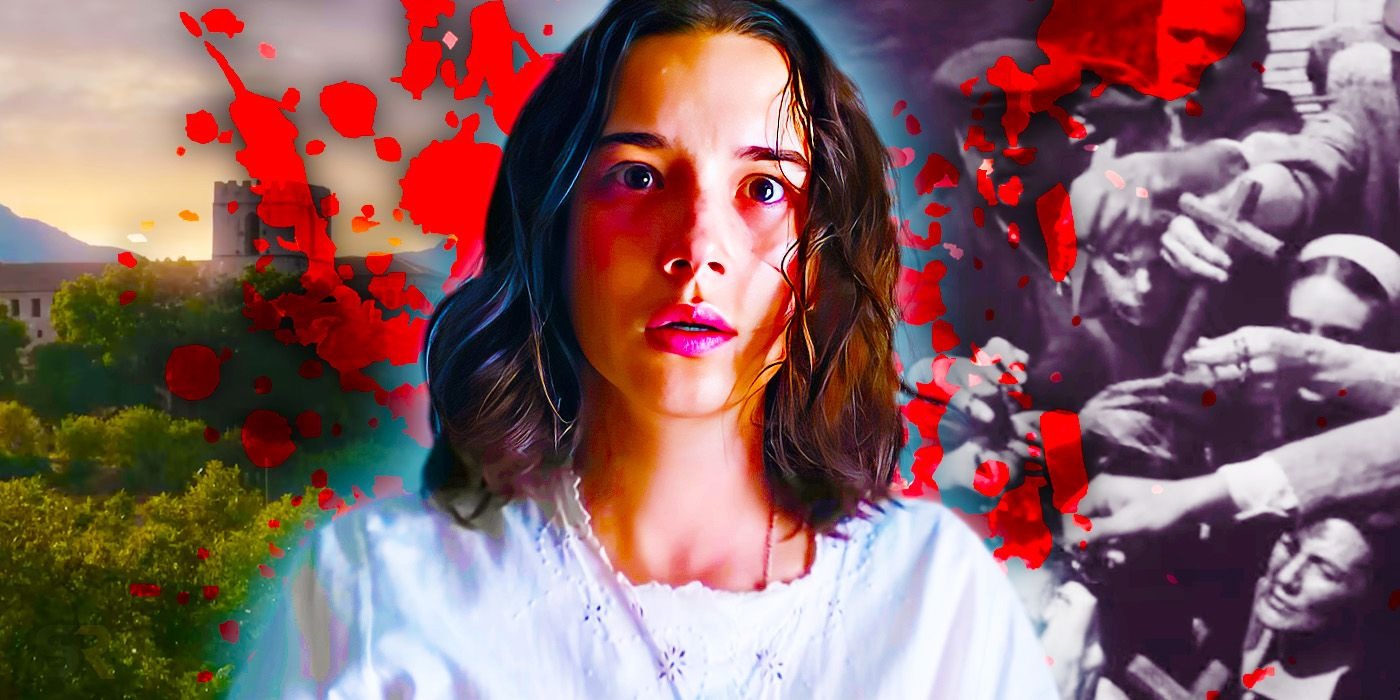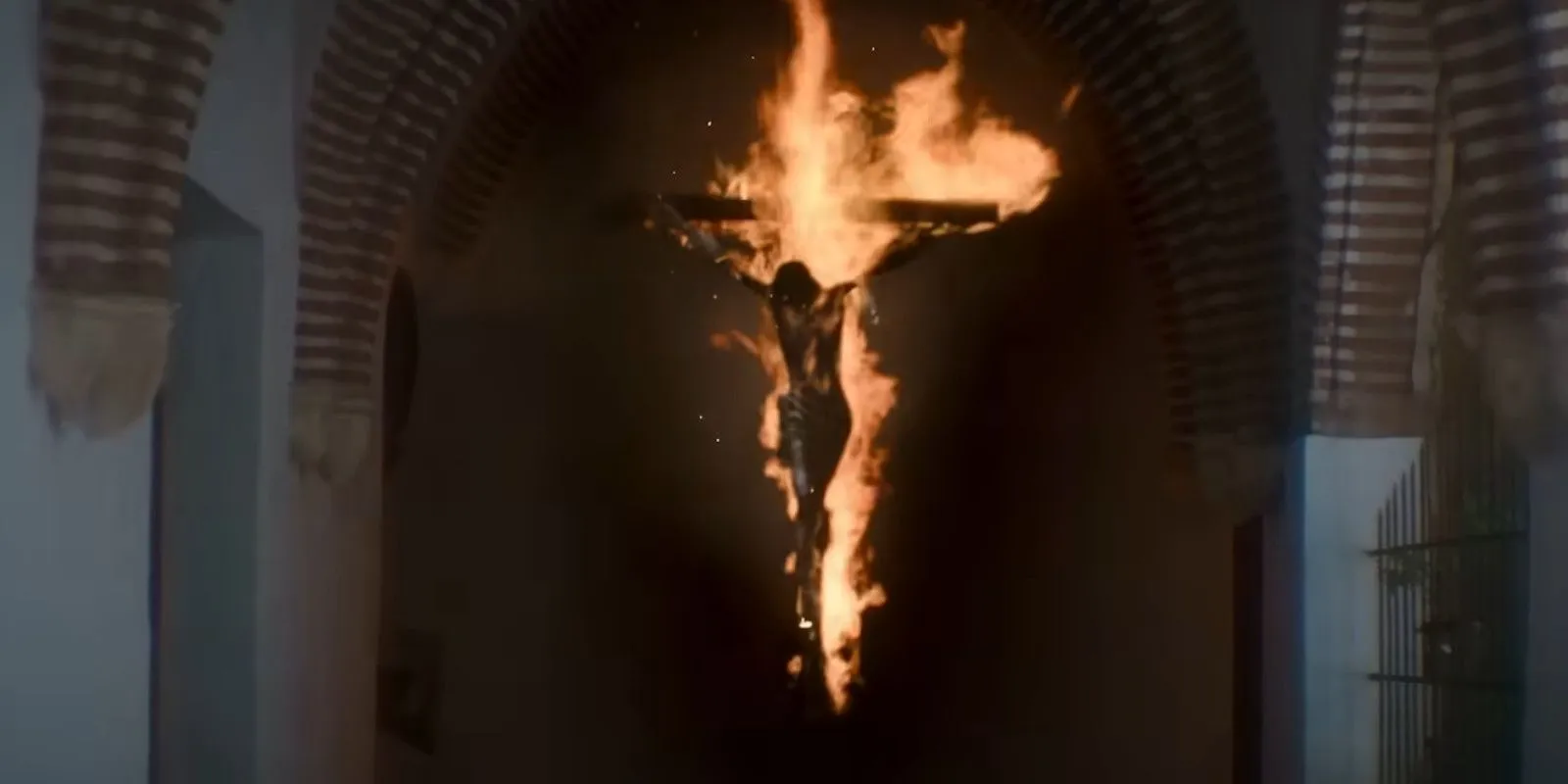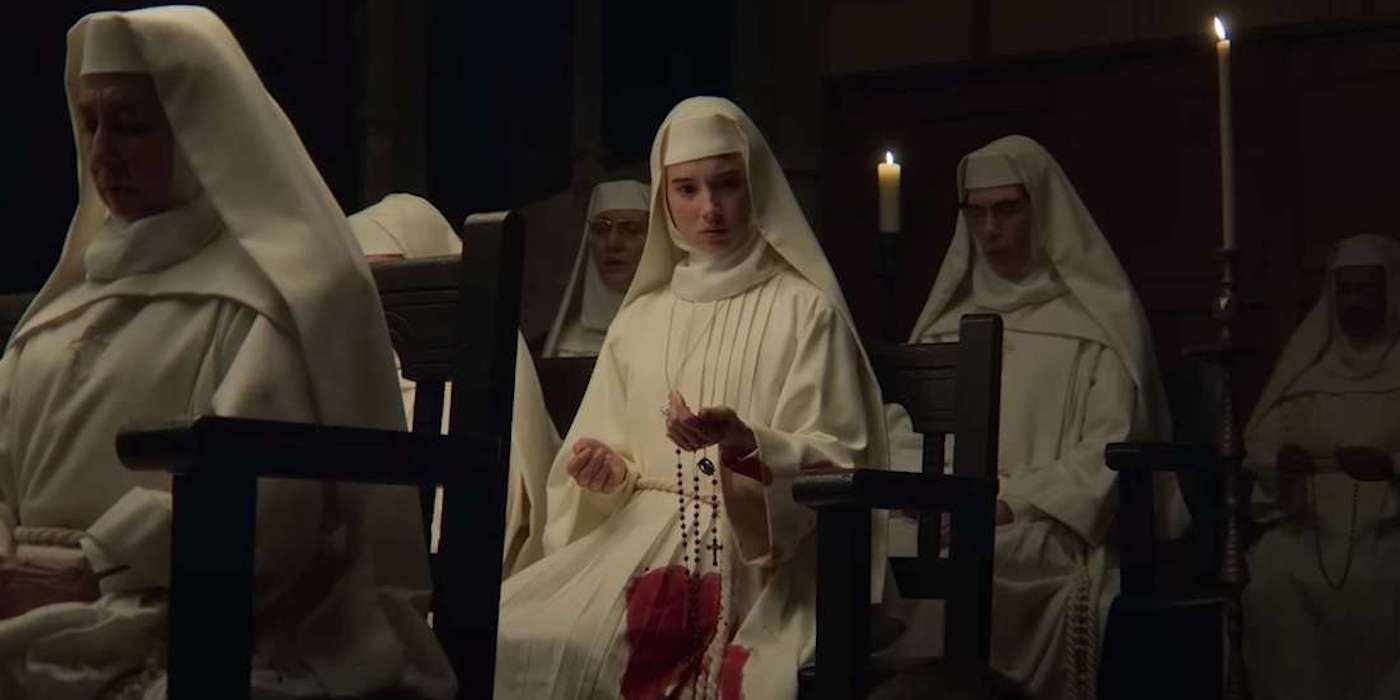Sister Death is a Spanish horror movie released on Netflix, telling the story of a nun who takes up a teaching role at a Catholic girls’ school, only to uncover a sinister secret buried in the institution’s past. Written and directed by Paco Plaza, this film serves as a prequel to his 2017 work, Verónica, shedding light on the origins of the blind nun known as Sister Narcisa, or “Sister Death.”
Following a harrowing event during the Spanish Civil War, a young girl from a secluded village starts exhibiting spiritual abilities. Years later, Sister Narcisa returns to the convent, which has since been converted into a school, to work as a teacher.
It does not take long for her to realize the school is haunted, as she encounters the restless spirit of a young girl and a deceased nun, Sister Socorro. As she unravels the convent’s history, she learns that Mother Superior and Sister Julia have been concealing grim secrets about Socorro’s past, and now, Socorro seeks vengeance for the injustice she suffered.

Netflix remains a top choice for those in search of a chilling horror film for the season, with a vast collection of eerie tales to go through.
The Spanish Civil War and Sister Socorro’s Past
At the start of Sister Death, viewers are presented with grainy black-and-white footage from 1939, though the full account of the events leading up to the film’s story goes back a few years earlier, during the Spanish Civil War.
Upon arriving at the convent, Sister Narcisa notices a wall riddled with bullet holes, remnants of the war, but later realizes the scars left behind go far beyond physical damage.
Gazing at the eclipse, she witnesses a vision of the convent being raided and learns that one of the intruders assaulted Sister Socorro, resulting in an unwanted pregnancy. The nuns within the convent swore to keep the child’s existence a closely guarded secret.
As the child grows older, she falls seriously ill, developing a high fever. Desperate to save her daughter, Socorro insists on taking her to a hospital, but Mother Superior and Sister Julia refuse, determined to prevent their secret from ever leaving the convent.
Instead, they lock Socorro in her room and attempt to treat the child themselves, immersing her in a cold bath to lower her temperature. Tragically, the young girl struggles, hitting the back of her head on the tub and succumbing to her injuries. Overwhelmed with grief, Socorro takes her own life by hanging herself inside her room.
By the time Sister Narcisa arrives at the convent in 1949, only Mother Superior and Sister Julia remain from those who were present during the tragic incident. The students, on the other hand, believe the school is haunted by the spirit of a young girl.
Strange drawings of a hangman figure appear on the walls at random, and the girls recount how another nun, Sister Inés, added legs to one of the drawings to show it was harmless.
However, after that, her name mysteriously appeared on the wall, frightening her so much that she left—though there is speculation she may have been killed, with the other nuns covering up the truth.
The Early Years of Sister Narcisa
Flashbacks to Sister Narcisa’s childhood provide insight into her early life, showing scenes where people gather around her, holding crosses and prayer beads. Another scene depicts her kneeling before the sun with her hands raised, mirroring the posture she assumes at the end of the film during the eclipse.
Although no solar eclipse is evident in the black-and-white footage, the importance of these visions becomes clearer as her story progresses within the convent a decade later.
Religious themes have long played a role in horror films, from The Exorcist to Midsommar, shaping some of the most memorable stories in the genre.
Narcisa is referred to as “The Holy Girl of Peroblasco,” and Mother Superior calls the village “the lost village of Peroblasco.” It remains uncertain whether the village was already considered lost before Narcisa’s experiences or as a direct consequence of them.
A newspaper clipping shown to Narcisa by the nuns features the title “The Holy Girl of Parablasco,” with a subheading that reads, “The Virgin Mary Has Appeared in Spain,” followed by another headline stating, “A Message to the World.” Although the full details of what transpired remain vague, the way it impacted the nuns is crucial to the revealing story.
The timeline also reveals that 1939 is three years after the deaths of Socorro and her child. When the nuns claim that Narcisa and the occurrences in Parablasco “gave us hope in strength so that we might overcome adversity,” it likely refers to their struggle in dealing with Socorro’s lingering presence.
Mother Superior tells Narcisa that they contacted the bishop seeking assistance, and they were pleased when he sent her. They probably believed Narcisa’s supernatural experiences would aid them in handling the disturbances caused by Socorro’s spirit and that of her child.
The Chair, The Hangman, The Marble, and St. Martha’s Hand
Soon after Narcisa’s arrival, she notices a marble rolling across the floor towards her. Later that night, she finds a box on her shelf containing a photograph of Sister Socorro and a pair of scissors.
Then, a chair mysteriously tips over in the corner of the room, followed by a knock at the door. When she turns to the wall, she sees a hangman game drawn, featuring only a head and torso. Each of these elements connects directly to Socorro and her child.
The tipping chair is a reference to Socorro’s death, as she used it to hang herself. The hangman drawing also relates to this event, though the height at which it is drawn suggests that it was likely created by the spirit of Socorro’s daughter. The marble may have been a toy the child played with before her passing.
Many outstanding films have been produced outside of Hollywood, and language differences should not deter audiences from experiencing them.
Another instance involving the marble leads Narcisa down to the basement, where she stumbles upon the hand of St. Martha, an artifact that Mother Superior claims had been lost since the war.
While the hand of St. Martha does not exist in historical records, its disappearance coincides with Socorro’s death. Mother Superior remarks that “this place has never been the same after that happened,” reinforcing the idea that Narcisa is being guided toward uncovering the tragic past of Socorro and her child.
Rather than serving as mere symbols, these elements act as clues for Narcisa, pointing her in the direction of the truth surrounding the events of 1936.
The Question of Time Travel at the End of Sister Death
One of the most unexpected developments in Sister Death occurs when Sister Narcisa gazes into the eclipse and witnesses the full extent of Socorro’s tragic story—how Sister Julia confined Socorro to her room while Mother Superior’s attempt to treat the child led to her unintended death.
When Narcisa opens Socorro’s door, past and present seem to merge. Socorro attacks Sister Julia, cutting her cheek with a statue, and the injury appears on her face in the present.

A statue then topples onto Julia, mirroring the damage to her face in both timelines. Similarly, Mother Superior drowns in bloody water in the past while simultaneously coughing up blood as she perishes in the present.
From Rebel Ridge to Saturday Night to The Outrun, Netflix has a diverse lineup of films for every viewer this month. While this sequence might resemble time travel, a direct interpretation would lead to a paradox.
If Sister Julia and Mother Superior had died in the past, Narcisa would never have been present at the school to set Socorro free. Since time travel is not a recurring theme in the film, it is best understood as a supernatural form of justice, ensuring that Mother Superior and Sister Julia suffer the consequences of their past actions.
How the Ending of Sister Death Connects to Verónica
In the film’s final moments, the setting moves to a modern-day classroom, where an older Sister Narcisa is introduced to a group of girls, including Sandra Escacena, who reprises her role as Verónica from the 2017 movie Verónica. The original film portrays Narcisa, known as “Sister Death,” as a gruff and somewhat sarcastic figure, differing from her depiction in Sister Death.
During a conversation in Verónica, Narcisa claims she blinded herself to avoid seeing “the shadows.” However, in Sister Death, she loses her sight after staring at the eclipse, long before she encounters Socorro.
This discrepancy suggests that Narcisa may have fabricated the story she told Verónica. While her true motivations remain unclear, the film leaves the possibility open for further exploration should Paco Plaza choose to expand on this universe in the future.



